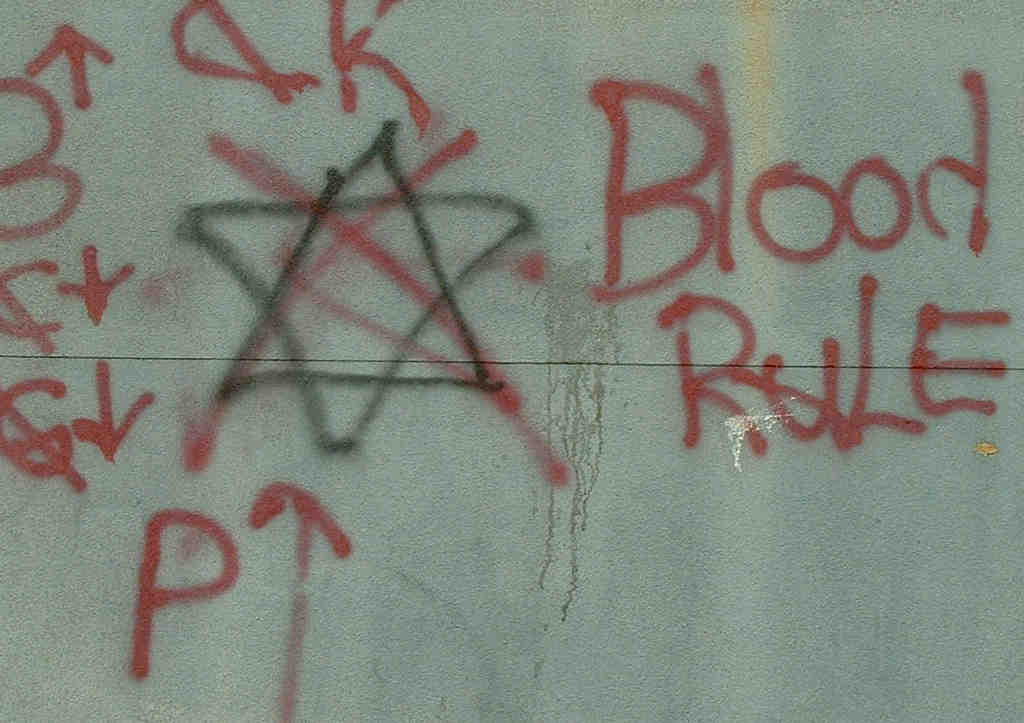Blood gang sign has become a topic of significant interest for many people seeking to understand its origins and cultural significance. This article delves deep into the world of Blood gangs, exploring their history, symbols, and the meaning behind their signs. Whether you're a student, researcher, or simply curious about gang culture, this guide will provide valuable insights into the Blood gang sign.
Blood gangs have been part of the American cultural landscape for decades. Their symbols and signs are more than just gestures; they represent a complex network of values, traditions, and codes that govern their community. Understanding these signs can help us gain a deeper appreciation of the challenges and realities faced by those involved in gang culture.
In this article, we will explore the origins of the Blood gang sign, its significance, and the impact it has on society. By the end of this article, you will have a comprehensive understanding of the Blood gang sign and its role in modern culture.
Read also:What Is Rose Kennedy Net Worth 2024 Wealth And Influence
Table of Contents
- History of Blood Gangs
- Symbols Used by Blood Gangs
- Significance of Blood Gang Signs
- Common Blood Gang Gestures
- The Importance of Red in Blood Gang Culture
- Subcultures Within Blood Gangs
- Impact on Society
- Law Enforcement's Role
- Preventing Gang Involvement
- Conclusion
History of Blood Gangs
Blood gangs, also known as the Bloods, originated in the late 1960s and early 1970s in South Central Los Angeles. Initially formed as a protective alliance against rival gangs, the Bloods quickly evolved into a formidable force in urban America. The Blood gang sign became a crucial element of their identity, symbolizing unity and loyalty among members.
During the 1970s, tensions between the Bloods and the Crips, another prominent gang, escalated, leading to a series of violent confrontations. These conflicts further solidified the importance of the Blood gang sign as a way to identify allies and adversaries. Over the years, the Bloods have expanded their influence across the United States, adapting their symbols and signs to fit local contexts.
Origins of the Blood Gang Sign
The origins of the Blood gang sign can be traced back to the early days of the gang's formation. Initially, members used hand gestures and symbols to communicate secretly among themselves. These signs evolved over time, becoming more elaborate and meaningful as the gang's influence grew. Today, the Blood gang sign remains one of the most recognizable symbols associated with gang culture.
Symbols Used by Blood Gangs
Blood gangs use a variety of symbols to represent their identity and values. These symbols are often incorporated into their clothing, tattoos, and graffiti, making them easily identifiable to both members and outsiders.
- Five-pointed star: Represents the five principles of the Bloods – love, loyalty, respect, knowledge, and wisdom.
- Red color: Symbolizes the blood shed by members in defense of the gang.
- Letters "B" and "C": Often used in graffiti to signify allegiance to the Bloods and opposition to the Crips.
Common Symbols in Blood Gang Culture
In addition to the five-pointed star and red color, Blood gangs also use other symbols to reinforce their identity. These include:
- Pitchforks: Represent the devil's influence in gang culture.
- Skeletons: Symbolize death and the inevitability of conflict.
- Skulls: Used to convey strength and resilience in the face of adversity.
Significance of Blood Gang Signs
Blood gang signs hold deep significance for members, serving as a reminder of their loyalty and commitment to the gang. These signs are not just gestures; they represent the values and principles that guide the Bloods in their daily lives. Understanding the significance of these signs can help us appreciate the complexities of gang culture and the challenges faced by its members.
Read also:What Is Pedro Gomez Net Worth 2024 Career And Financial Overview
For many Bloods, the gang sign is a source of pride and identity. It represents their connection to a larger community and provides a sense of belonging in an often hostile world. However, these signs can also be intimidating to outsiders, contributing to the negative stereotypes associated with gang culture.
Cultural Impact of Blood Gang Signs
The cultural impact of Blood gang signs extends beyond the gang itself, influencing popular culture and media. Movies, music, and literature often depict these signs as symbols of violence and danger, perpetuating negative stereotypes about gang members. However, some artists and activists have sought to reclaim these symbols, using them to promote positive messages and social change.
Common Blood Gang Gestures
Blood gang gestures are an integral part of their communication system, allowing members to convey messages without speaking. These gestures can range from simple hand signals to complex body movements, each carrying its own meaning and significance.
Examples of Blood Gang Gestures
- Five-finger wave: Represents the five principles of the Bloods.
- Clenched fist: Symbolizes strength and solidarity among members.
- Pointing with the index finger: Used to indicate a specific target or location.
These gestures are often combined with other symbols and signs to create a comprehensive system of communication that is both effective and meaningful to Blood gang members.
The Importance of Red in Blood Gang Culture
Red is the defining color of Blood gang culture, symbolizing the blood shed by members in defense of their community. This color is prominently featured in their clothing, tattoos, and graffiti, making it easy to identify Blood gang members in public spaces.
For many Bloods, wearing red is a way to show pride in their identity and solidarity with fellow members. However, this practice can also make them vulnerable to retaliation from rival gangs, highlighting the risks associated with gang involvement.
Red in Popular Culture
The use of red in Blood gang culture has influenced popular culture in various ways. Movies, music, and fashion often incorporate red elements to evoke the image of gang life, creating a powerful visual symbol that resonates with audiences worldwide. However, this representation can sometimes perpetuate negative stereotypes about gang members, reinforcing existing biases and misconceptions.
Subcultures Within Blood Gangs
Blood gangs are not a monolithic entity; they consist of various subcultures, each with its own unique characteristics and traditions. These subcultures often develop their own symbols and signs, adding depth and complexity to the overall Blood gang identity.
Examples of Blood Gang Subcultures
- Piru Street Boys: One of the oldest Blood gangs, known for their distinctive style and rituals.
- 300 Pirus: A subset of the Piru Street Boys, known for their involvement in drug trafficking and violent crime.
- Rollin' 30s Harlem Bloods: A prominent Blood gang based in New York City, known for their influence in the hip-hop community.
These subcultures contribute to the diversity and richness of Blood gang culture, providing a glimpse into the complex world of gang life.
Impact on Society
The impact of Blood gang signs on society is both positive and negative. On one hand, these signs serve as a reminder of the challenges faced by marginalized communities and the need for social reform. On the other hand, they can perpetuate negative stereotypes about gang members, contributing to fear and misunderstanding among the general public.
Efforts to address the root causes of gang involvement, such as poverty and lack of education, are essential in reducing the negative impact of Blood gang signs on society. By promoting positive alternatives and providing support to at-risk youth, we can help create a safer and more inclusive community for all.
Social Reforms and Initiatives
Various social reforms and initiatives have been implemented to address the challenges posed by Blood gang signs and their impact on society. These include:
- Gang prevention programs: Aimed at reducing gang involvement among at-risk youth.
- Community outreach programs: Designed to build trust and cooperation between law enforcement and local communities.
- Educational programs: Focused on providing alternative pathways for young people to succeed in life.
Law Enforcement's Role
Law enforcement agencies play a crucial role in addressing the challenges posed by Blood gang signs and their associated activities. Through collaboration with community organizations and other stakeholders, law enforcement can develop effective strategies to reduce gang violence and promote public safety.
However, it is important to recognize the limitations of law enforcement in addressing the root causes of gang involvement. By working together with community leaders and social service providers, law enforcement can create a more comprehensive approach to tackling the challenges posed by Blood gang signs and their impact on society.
Strategies for Reducing Gang Violence
Several strategies have been developed to reduce gang violence and promote public safety. These include:
- Community policing: Encourages collaboration between law enforcement and local communities.
- Gang injunctions: Legal measures aimed at restricting gang activities in specific areas.
- Restorative justice programs: Focus on repairing the harm caused by gang violence and promoting reconciliation between victims and offenders.
Preventing Gang Involvement
Preventing gang involvement requires a multifaceted approach that addresses the root causes of gang activity while providing positive alternatives for at-risk youth. By investing in education, job training, and community programs, we can help create a safer and more inclusive environment for all members of society.
Parents, educators, and community leaders all have a role to play in preventing gang involvement. By fostering open communication and providing support to young people, we can help them resist the lure of gang life and pursue more positive paths in life.
Role of Parents and Educators
Parents and educators can play a vital role in preventing gang involvement by:
- Encouraging open communication with young people about the dangers of gang life.
- Providing support and guidance to help young people develop positive coping mechanisms.
- Connecting young people with positive role models and mentors who can inspire them to succeed.
Conclusion
Blood gang signs are more than just gestures; they represent a complex network of values, traditions, and codes that govern Blood gang culture. Understanding the significance of these signs can help us appreciate the challenges faced by gang members and the need for social reform. By promoting positive alternatives and providing support to at-risk youth, we can help reduce gang involvement and create a safer, more inclusive community for all.
We invite you to share your thoughts and experiences in the comments section below. Your feedback is valuable in helping us improve our understanding of Blood gang signs and their impact on society. Additionally, feel free to explore other articles on our website for more insights into gang culture and related topics.



